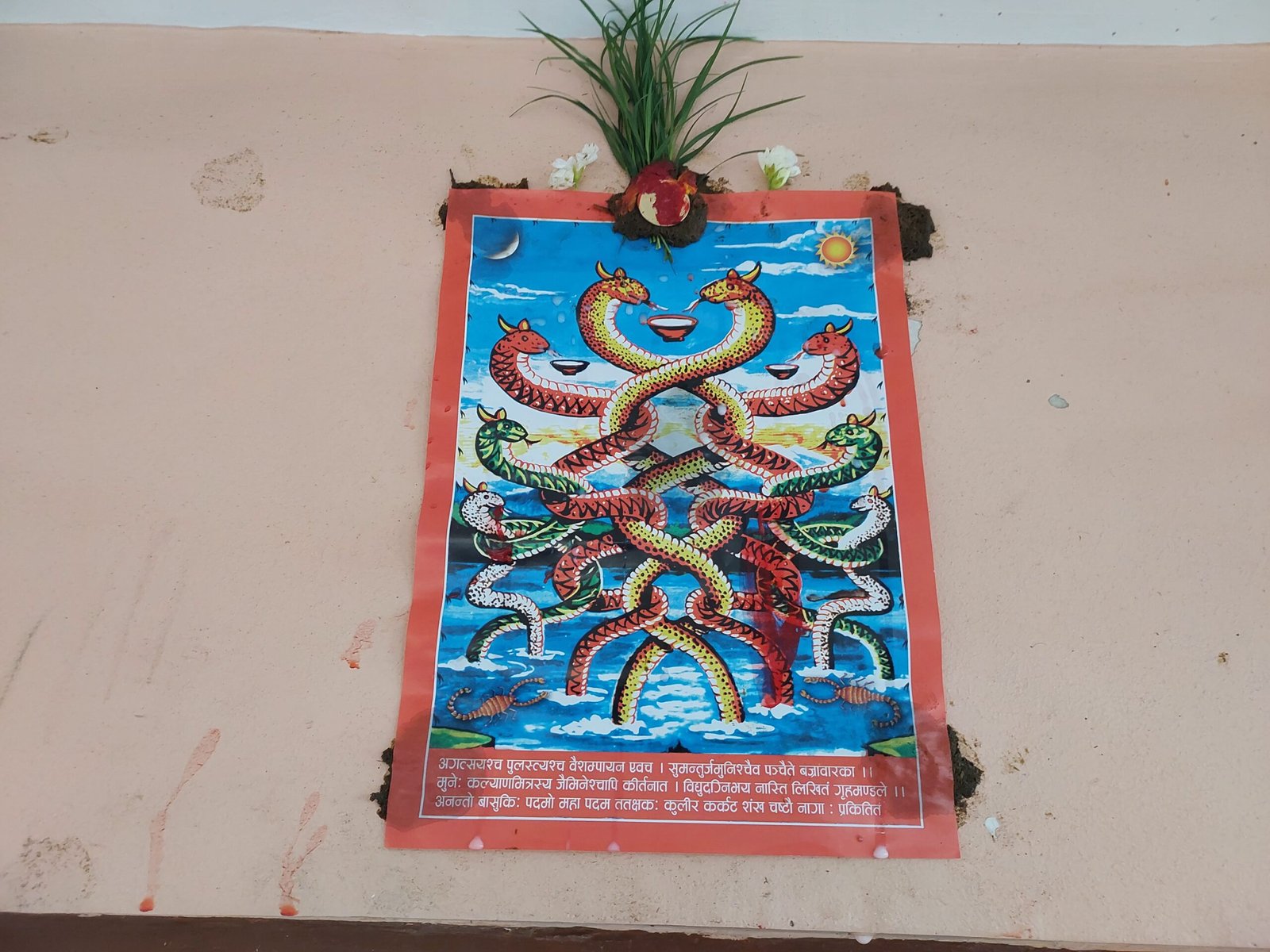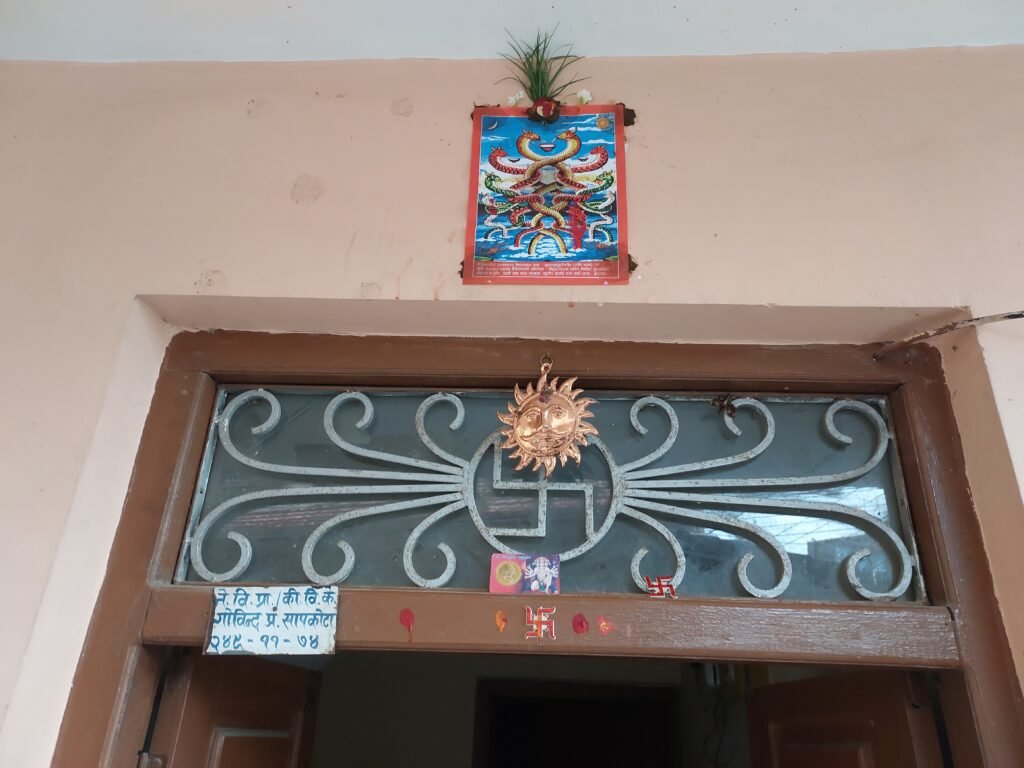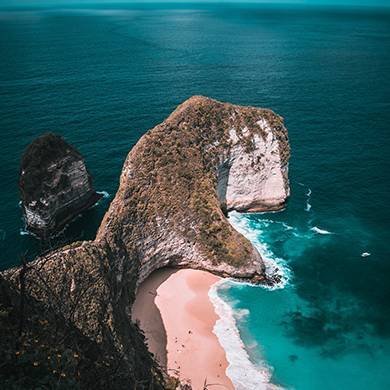
Nag Panchami Nepal – A Sacred Festival of Serpent Deities, Nature, and Culture
Nag Panchami is one of the oldest and most spiritually significant festivals celebrated across Nepal. Deeply revered by both Hindu and Buddhist communities, this sacred occasion is dedicated to Nagas—divine serpent deities believed to be guardians of lakes, rivers, and underground springs. The Nagas are protectors of fertility and natural harmony, worshipped for maintaining the delicate balance between humanity and the environment. In Nepalese mythology, they represent the cycle of life, protection, renewal, and wisdom.
Falling on the fifth day of the waxing moon in the month of Shrawan (July or August), Nag Panchami Nepal is not only a religious ritual but a celebration of Nepal’s profound connection between nature, mythology, and spiritual life. Its roots go deep into Vedic traditions and indigenous animist beliefs that venerate serpents as symbols of divine power, mystery, and the unseen forces that govern nature.
At Mountain King Treks and Expedition Pvt. Ltd., we embrace and honor the spiritual depth of festivals like Nag Panchami. For us, these rituals are not just cultural events—they are living traditions that continue to shape daily life in the Himalayas. As trekking guides and cultural ambassadors, we frequently walk through sacred landscapes where the stories of the Nagas are still told—ancient forest shrines, holy springs, and mountain caves where offerings are made each year.
This year, we marked Nag Panchami Nepal with special reverence at the entrance of our office, placing a symbolic image of the Nag as part of our puja. This act is our humble tribute to Nepal’s spiritual roots and our deep respect for the guardians of the natural world.
Through celebrations like Nag Panchami, we invite travelers not only to explore Nepal’s majestic peaks but to connect with the spiritual essence of the Himalayas—where the divine and the natural are inseparably woven together. This ancient festival reminds us all of the vital harmony between people, culture, and nature, which we strive to protect with every journey we lead.
🕉️ The Cultural Significance of Nag Panchami in Nepal
Nag Panchami is much more than simple snake worship—it serves as a profound cultural bridge between humanity and the natural world, reflecting a deep reverence for nature’s mysteries and forces. In Nepali tradition, serpents or Nagas are regarded as sacred beings intimately connected to water, rainfall, fertility, and protection. They are revered as divine guardians who regulate the balance of nature, especially the vital water cycles that sustain agriculture and life in Nepal’s diverse landscapes.
On this auspicious day, people across the country engage in time-honored customs by pasting intricate and colorful images of Nag Devata (serpent gods) above the doors and windows of their homes. These images are believed to act as powerful protective talismans, guarding families against evil spirits, snakebites, diseases, and natural disasters such as floods and droughts. This tradition symbolizes the community’s collective hope for safety and well-being throughout the year.
The worship of Nagas takes place in multiple sacred spaces—within homes, village temples, caves, and natural springs—each location infused with spiritual significance. Natural springs, wells, and ponds are often considered the very abodes of the Nagas, where these mystical serpent deities reside and bless the earth’s water. Rituals at these sites usually involve offerings of milk, honey, flowers, and rice, symbolizing purity, devotion, and gratitude.
Every act of worship during Nag Panchami is a symbolic expression of respect for life, balance, and the protection of the environment. The people’s faith is strong and unwavering: when the Nagas are pleased and honored, it is believed that peace, health, fertility, and prosperity will follow. This deep-seated belief encourages the sustainable use and preservation of water sources and natural habitats, reflecting a timeless ecological wisdom.
Beyond religious rites, Nag Panchami fosters a sense of community bonding and cultural continuity, where stories, songs, and legends about the Nagas are shared among generations. These narratives teach lessons about harmony with nature, the consequences of disrespecting the environment, and the importance of living in balance with the earth’s rhythms.
In essence, Nag Panchami in Nepal is a living tradition that honors the sacredness of serpents as more than mythological creatures—they are powerful symbols of life’s interconnectedness, guardians of nature’s vital forces, and an enduring source of spiritual inspiration.
🌳 Nature and Nagas – Protectors of Earth’s Sacred Elements
In Nepali belief, the boundary between nature and spirit is fluid and inseparable—everything in the natural world is alive with sacred energy and consciousness. The Nagas, revered as divine serpent beings, are believed to dwell in sacred lakes, rivers, caves, and underground springs, making them the mystical guardians of these vital water sources. These waters are not only the lifeblood of communities but are seen as living entities imbued with spiritual power. The Nagas, therefore, serve as protectors of rainfall, agriculture, fertility, and the overall balance of the earth’s ecosystems.
Among the most cherished natural water sources in Nepal are the kuwa, traditional hand-dug wells that have been essential for centuries in supplying clean and fresh groundwater to villages. These wells tap into underground springs and aquifers, drawing pure water that sustains daily life, irrigation, and livestock. The kuwa are more than just physical structures—they are sacred places where the earth’s hidden water is accessed, symbolizing the deep relationship between humans and the natural world.
On Nag Panchami, these wells, along with natural springs, ponds, rivers, and stone spouts (inar), are respectfully cleaned and adorned with flowers, sacred grass (dubo), and offerings. This reverence highlights the belief that these water sources are the abodes of Nagas—powerful serpent spirits who watch over and protect these life-giving elements. The water flowing from a kuwa or spring is considered blessed, and rituals performed there ensure the continued purity and fertility of the land.
Honoring the Nagas on Nag Panchami is more than a religious act—it is an expression of profound ecological awareness deeply embedded in Nepali culture. By venerating these serpent deities, communities symbolically acknowledge their dependence on nature’s cycles and their responsibility to preserve the environment. This veneration reflects an ancient wisdom that recognizes the delicate harmony between human life and the natural world.
Nag Panchami is a powerful reminder that the concept of living in harmony with natural forces is not a new or modern idea—it has been practiced and cherished in Nepal for centuries. The festival reinforces the vital relationship between humans and the environment, urging people to protect water bodies, forests, and fertile lands to ensure the well-being of future generations.
At Mountain King Treks, we proudly uphold this tradition by encouraging sustainable trekking practices that minimize ecological impact. We emphasize respect for local water sources, ensuring that sacred springs, ponds, and wells like the kuwa are kept pure and unharmed. Our guides share with trekkers the importance of rituals that honor nature as a living presence, cultivating a deeper appreciation for the mountains, forests, and rivers that surround us.
By blending ancient reverence with modern environmental responsibility, Nag Panchami inspires all who journey through Nepal to become stewards of the earth’s sacred elements. This spiritual connection nurtures not only the health of the land but also the hearts of those who walk upon it, reminding us that protecting nature is an act of both devotion and survival.
🕉️ Hinduism and the Myth of Lord Krishna and Kalia Naag
One of the most beloved and enduring stories associated with Nag Panchami comes from the rich tapestry of Hindu scriptures and folklore—the captivating tale of Lord Krishna and Kalia Naag. This myth beautifully illustrates the divine power of courage, protection, and purification, themes that resonate deeply with devotees celebrating the festival.
According to legend, the once pristine Yamuna River was poisoned and rendered lifeless by the venomous serpent Kalia Naag, whose multiple heads spread toxicity through the water, threatening the health and survival of people, animals, and plants dependent on its flow. The river’s contamination symbolized not only physical pollution but also spiritual imbalance and fear in the community.
In his divine childhood form, known for his playful yet heroic exploits, Lord Krishna took it upon himself to restore balance and purity. With unwavering bravery, Krishna plunged into the toxic waters and confronted Kalia. The epic battle culminated with Krishna dancing gracefully atop the many heads of the serpent, subduing him without destruction. Krishna’s dance was both a display of divine strength and compassion, and it ultimately banished Kalia from the river, restoring the Yamuna’s purity and bringing life back to its waters.
This myth transcends a simple story of good defeating evil—it is a powerful allegory of courage in the face of danger, divine protection over nature, and the purification of life-giving resources. For Hindu families across Nepal and India, the story of Krishna and Kalia Naag embodies the very spirit of Nag Panchami, inspiring joy, reverence, and hope.
During Nag Panchami, this legend is retold in songs, dramas, and rituals, reminding devotees of the importance of respecting nature’s forces and the protective power of the divine. The serpent, once feared as a source of danger, is transformed into a symbol of spiritual strength and guardianship. The festival thus becomes a celebration of harmony—between humans, nature, and the divine.
Through this myth, Nag Panchami teaches timeless values that continue to guide families in Nepal: the need for courage to overcome obstacles, the reverence for natural elements like rivers and water, and the faith that through devotion and respect, life’s purity and balance can be restored and maintained.
☸️ Nagas in Buddhist Belief – The Guardians of Dharma
In addition to their revered status in Hinduism, Nagas hold a deeply significant place in Buddhist tradition, especially within Mahayana and Vajrayana Buddhism, both of which are widely practiced across Nepal. In Buddhist scriptures and teachings, Nagas are regarded as powerful protectors of the Dharma—the profound spiritual teachings and sacred texts that guide practitioners on the path to enlightenment.
According to Buddhist lore, Nagas are often depicted as serpent-like beings who dwell in hidden realms beneath lakes, rivers, and springs. They are believed to possess vast spiritual wisdom and have played a crucial role in preserving and transmitting sacred knowledge. In many stories, Nagas have offered precious jewels and esoteric teachings to enlightened masters, thus symbolizing their role as guardians of both material and spiritual treasures.
Within the rich tapestry of Tibetan Buddhism, which has a profound influence in Nepal’s Himalayan regions, it is common practice to make offerings to Nagas at lakes, rivers, and natural springs. These offerings—often consisting of food, incense, and ritual objects—are made to appease these powerful spirits and seek their protection and blessings. Such ceremonies are believed to maintain the spiritual balance of the environment and ensure the harmonious flow of energies essential for both physical wellbeing and spiritual practice.
The Nagas’ presence is understood as part of a living, unseen world that coexists alongside the human realm. Their veneration is not merely symbolic but reflects an active relationship between humans and the spiritual guardians of the natural world. By honoring the Nagas, Buddhists reinforce the importance of respecting nature as sacred and interconnected with the path to enlightenment.
This tradition also highlights the profound environmental wisdom embedded in Buddhist practice—acknowledging that protecting natural elements like water sources is inseparable from safeguarding spiritual wellbeing. The harmony between humans, nature, and the spiritual realm is central to both Buddhist philosophy and the celebration of Nag Panchami in Nepal.
For Mountain King Treks, recognizing the Buddhist reverence for Nagas enriches our understanding of Nepal’s diverse cultural landscape. It reminds us that trekking through these sacred lands is not just a physical journey but also a spiritual one, where every spring, lake, and forest carries the blessings of ancient protectors and timeless teachings.
🌊 Ritual Practices at Water Sources – Wells (Kuwa), Stone Spouts (Inar), and Ponds
One of the most distinctive and beautiful aspects of Nag Panchami in Nepal is its profound connection to water sources, which are regarded not merely as resources but as living sacred entities. The festival’s rituals extend far beyond temple worship—families and communities honor the life-giving waters by visiting nearby kuwa (traditional wells), inar (ancient stone spouts), and pokhari (ponds), each believed to be the dwelling places of Nag Raj, the King of Serpents.

In villages, towns, and city neighborhoods, these water sites are carefully cleaned, purified, and beautifully decorated with fresh flowers, marigold garlands, and dubo grass—a sacred herb used in rituals. This communal act of cleaning is both a physical and spiritual purification, symbolizing respect and gratitude toward the Nagas and the life they sustain.
The worship at these sites is deeply symbolic. Water here is not simply a resource to be used but is understood as the essence of life itself—pure, divine, and worthy of reverence. The rituals performed at the kuwa, inar, and pokhari reflect the belief that polluting or wasting water disrupts the delicate balance of nature and invites misfortune.
Inside homes, this respect is echoed by adorning doorways and windows with vibrant images of Nag Devata (serpent gods), which act as sacred guardians to protect the household from harm and misfortune. Alongside these images, families prepare special foods such as sweet rice pudding (kheer), molasses (gur), and fresh fruits as offerings to please the Nagas and invite their blessings of health, fertility, and prosperity.
The act of making offerings—whether pouring milk over serpent idols, offering rice grains, or lighting oil lamps—is a heartfelt gesture of devotion and recognition of the interconnectedness of human life and nature’s cycles. These rituals honor the eternal bond between water, the Nagas, and the wellbeing of the community.
For Mountain King Treks, participating in or witnessing these sacred rituals offers travelers a unique window into Nepal’s living spiritual traditions—where reverence for water and nature is woven into daily life and celebrated with heartfelt devotion during Nag Panchami.
🌾 Nepal’s Cultural Harmony – A Land of Festivals and Spiritual Diversity
Nag Panchami is just one of the many vibrant, symbolic festivals that make Nepal not only a trekking destination but a land of living heritage. Whether you’re walking ancient trails or exploring sacred valleys, you’ll find culture pulsing through every village and temple. Here are some of Nepal’s most important festivals celebrated across different regions, ethnicities, and seasons:
🕉️ Teej
A powerful women’s festival celebrated mainly by Hindu women, Teej is dedicated to Goddess Parvati. Women fast, dance, and pray for the well-being of their husbands and families. Red saris, folk songs, and mass gatherings at temples like Pashupatinath make this a dazzling sight.
🐐 Dashain
The biggest and longest Hindu festival in Nepal, Dashain symbolizes the victory of good over evil. Families reunite, receive blessings, and celebrate with feasts and rituals. The tika and jamara ceremony represents purity, prosperity, and protection.
🪔 Tihar (Deepawali)
Known as the Festival of Lights, Tihar honors animals like crows, dogs, cows, and oxen, culminating in Bhai Tika—celebrating sibling love. Homes and temples glow with oil lamps and vibrant rangoli patterns in this 5-day celebration.
🌕 Lhosar (Tamang, Sherpa, Gurung New Year)
Different Himalayan communities celebrate Lhosar with cultural songs, masked dances, feasts, and family blessings. It marks the beginning of the Tibetan lunar calendar and is joyfully celebrated in regions like Langtang, Solukhumbu, and Upper Mustang.
🔥 Maghi (Maghe Sankranti)
Celebrated in the Tharu and other Madhesi communities, Maghi marks the beginning of the new year. It is a time of purification, feasting on yam and sesame delicacies, and sharing joy with community elders.
🍂 Udhauli and Ubhauli
Celebrated by the Kirat community, these festivals honor nature and ancestors. Udhauli marks the descent to lower elevations for winter, and Ubhauli the return upward in spring. Ritual dances like Sakela show gratitude to Mother Earth.
🌸 Gaura Parva
Observed mainly in western Nepal, Gaura Parva celebrates the union of Lord Shiva and Goddess Parvati. Women pray for the long life of their husbands by performing group rituals and singing traditional deusi-bhailo style folk songs.
🪔 Indra Jatra
Kathmandu’s most iconic street festival, Indra Jatra honors the god of rain and celebrates the living goddess Kumari. Chariot processions, masked Lakhey dances, and the raising of the Yosin pole create unmatched festive energy in the Kathmandu Valley.
🚩 Rato Machhindranath Rath Jatra
One of the longest-running chariot festivals in Nepal, this Newar celebration in Patan and Bungamati pays homage to the rain god. A towering wooden chariot is pulled through ancient lanes amid cheers and blessings.
🎊 Bisket Jatra
This vibrant New Year festival in Bhaktapur involves tug-of-war battles, tongue-piercing ceremonies, and towering chariot parades. It is one of Nepal’s most thrilling expressions of cultural drama and belief.
🕉️ Mani Rimdu Festival (Tengboche Monastery)
Held in the Khumbu region, this Buddhist festival at Tengboche Monastery includes sacred masked dances and chanting ceremonies. Celebrated by monks and locals, it’s a rare spiritual experience high in the Everest region.
🏔️ Tiji Festival (Lo Manthang, Upper Mustang)
A deeply spiritual Tibetan Buddhist festival celebrated in the walled city of Lo Manthang. Monks perform ancient dances and rituals to ward off evil and bring harmony, amidst stunning Himalayan surroundings.
🐚 Ganga Jamuna Jatra (Dhading)
Celebrated at the holy twin springs of Ganga and Jamuna, devotees offer water, flowers, and prayers. This sacred jatra draws pilgrims from surrounding districts, blending Hindu worship with local traditions.
🌸 Tripura Sundari Bhagawati Mai Jatra (Dhading)
A powerful goddess festival held at the revered Tripura Sundari Temple in Dhading. Devotees come to seek blessings, offer puja, and enjoy local music and dances in the temple courtyard.


🙏 Our Wishes from Mountain King Treks – Join Us in Celebrating Nepal’s Living Culture
At Mountain King Treks, we believe that every trek is not just an adventure—but a journey into the soul of Nepal. From sacred highlands like Gosaikunda Lake and Tsum Valley, to ancient cities celebrating Indra Jatra or Dashain, Nepal’s spirituality flows in every path we take.
🌿 On this sacred occasion of Nag Panchami 2081, we offer our heartfelt blessings to all. May your families be safe, your homes be protected, and may the divine Nagas watch over you with peace and prosperity.
We warmly invite you to explore Nepal not just for its breathtaking mountains—but for its festivals, legends, and living heritage.
👉 Best Trekking Agency in Nepal
👉 Poon Hill Trek
👉 Everest Base Camp Trek
👉 Manaslu Circuit with Tsum Valley Trek
👉 Upper Mustang Cultural Trek
👉 Ganga Jamuna Trek
👉 Annappurna Base Camp Short Trek
👉 Langtang Valley Trek
👉 Dhading Gorkha Heritage Trek
👉 Mardi Himal Trek
👉 Mulde Hill Trek
📖 Related Reading
- 🧭 Lodge Trekking Packing List for Nepal – From Low Hills to High Himalayas
- 🍽️ One-Star Restaurant at Everest Base Camp – Dining at the Top of the World
Let us guide you through a journey where nature, culture, and spirituality are woven together into every trail.
📩 Contact us anytime – we are here with warm hospitality and expert service.
With respect and blessings,
Govinda Prasad Sapkota
Mountain King Treks and Expedition Pvt. Ltd.
Maitrinagar, Kirtipur-2, Kathmandu, Nepal
🌐 www.mountainkingtrek.com
📧 mountainingtreks@gmail.com
📱 WhatsApp/Viber: +977-9841566449
Recent Posts
Poon Hill Trek – Short and Scenic Sunrise Trek in the Annapurna Region with Mountain King Treks
How to Stay Safe and Healthy While Trekking in Nepal
The Four Narayan Temples in Four Directions Protecting Kathmandu Valley

Thailand

